[In real time we are in Canada, preparing to canoe the Arctic Drainage.]
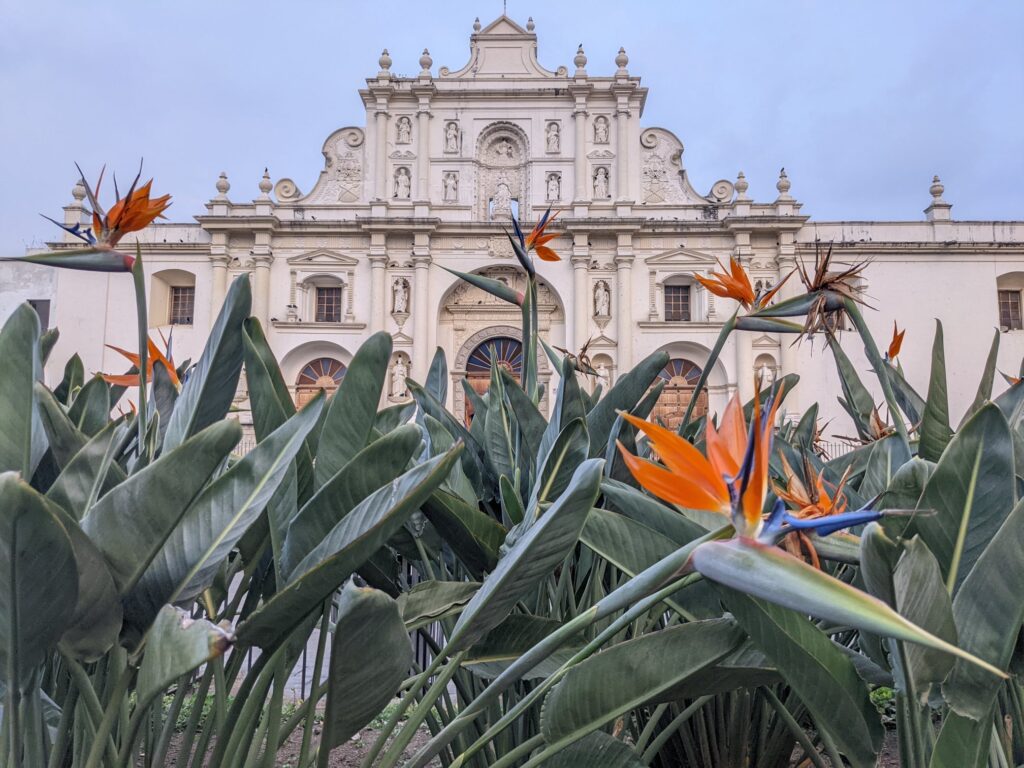
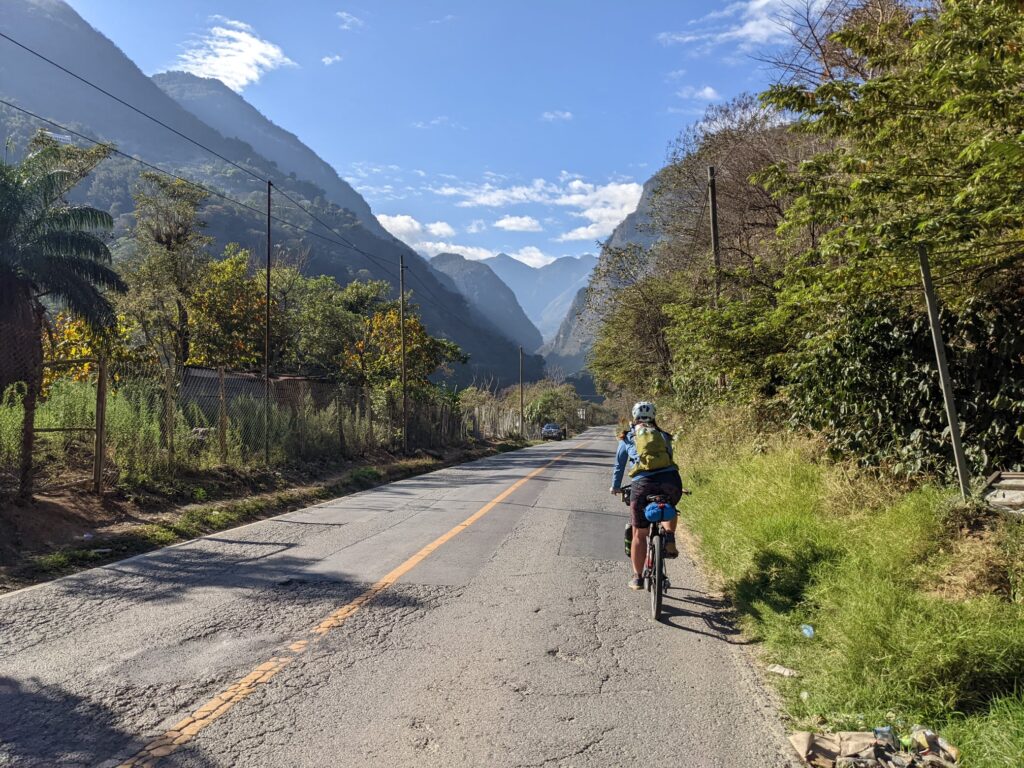
Our first full day in Guatemala was a steady climb. Mid afternoon we found a place to eat run by a family of Mam Mayan women. The first woman emerged from the kitchen with a baby in the blanket tied to her back and 3 little boys who were literally climbing the walls. She informed us they were all down here for the young woman who would be serving us, Valery’s, 15th birthday. When Valery saw us, she hurried back to the kitchen and there was much chattering in Mam and in rapid succession, 3 heads poked out from the kitchen followed by a great deal more chattering, some sounds of insistence, and the music abruptly changed from mariachi to Ed Sheeran.
A little boy came out and kept finding pretenses to walk slowly past our bike or peer at us. Other than that, we were the only ones there and had our daily check in. I folded up a 20 quetzal bill into a little heart and wrapped it in a napkin I decorated with “Happy Birthday” and “Feliz Cumpleanos” for V. Considering our work there done, we asked to pay. V seemed concerned that we were leaving so quickly. So I paused and she shyly began with a litany of apologies but she was wondering if, on behalf of one of the women in the kitchen, could she take a picture with us?
“Of course!” I replied. So we sat back down and waited until they had finished making food and bringing beers to the group of truckers on the porch. Then the cook came flying out. Giggling and trying to arrange her hair and tucking her Huipil (embroidered top shirt) into her Faja (a large woven belt for holding up the Corte and her cell phone). Veronica, the cook, however, who wanted the photos, did not have a cellphone. It took me a beat to realize this and offer that we could take the photos and then WhatsApp them to her.
This seemed to have been her plan all along. She inspected our phone, deemed it of much higher quality than what they can get in Guatemala, then selected a wall of the establishment and threw tables and chairs out of the way. They were delighted when we pulled out Neon’s little tripod and set it up on a barstool. The little boy who claimed to not want to be in any of the photos but DID want to come with us for the bike ride, became our photographer, pressing the button I had set to self timer and counting down on his fingers for us before it flashed.
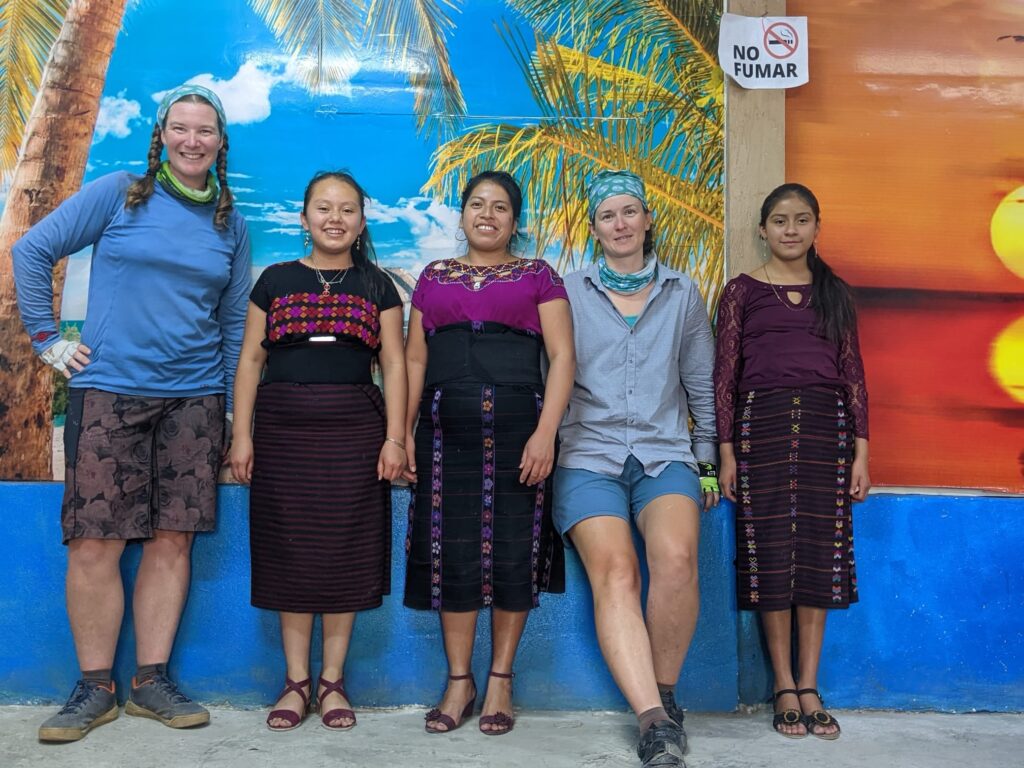
It turned in to a 30 minute photo shoot, with each take being scrutinized. Watching them inspect the photos and disapprove of this one or pleasure with that one, I reflected at how being self conscious seems pretty universal, and the standards of that judgment are, baffling to foreigners. Every single picture looked the same to me, except Neon and I trying to be of different heights, so as to fit with them more. Sometimes they coyly placed a hand upon one of our shoulders.
At the end of the shoot, after exchanging phone numbers and promising to send them as soon as we got to wifi, Veronica asked how much we would be charging them for the photographs. I pretended to deliberate then said in our shared language that, as a gesture of friendship between the women of our countries, we wanted them to have the photographs as gifts. This too was well received. It was a funny introduction to the culture.
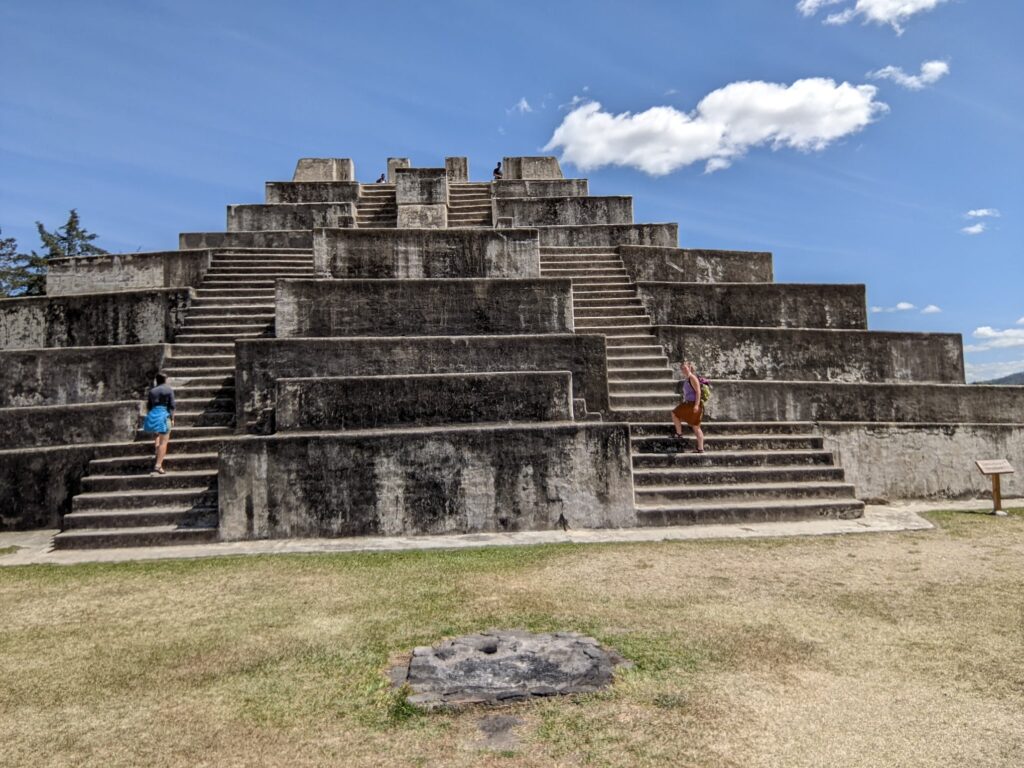
In the 1950s the United Fruit Company funded much of the excavation, some reconstruction, as well as re-plastering the ruins. This is largely frowned upon in the current archaeological communities but the current Mam visitors seemed proud, like the restoration was the least which could be done. I smiled as a Mam Mayan woman climbed the neighboring temple her ancestors built to get better reception.
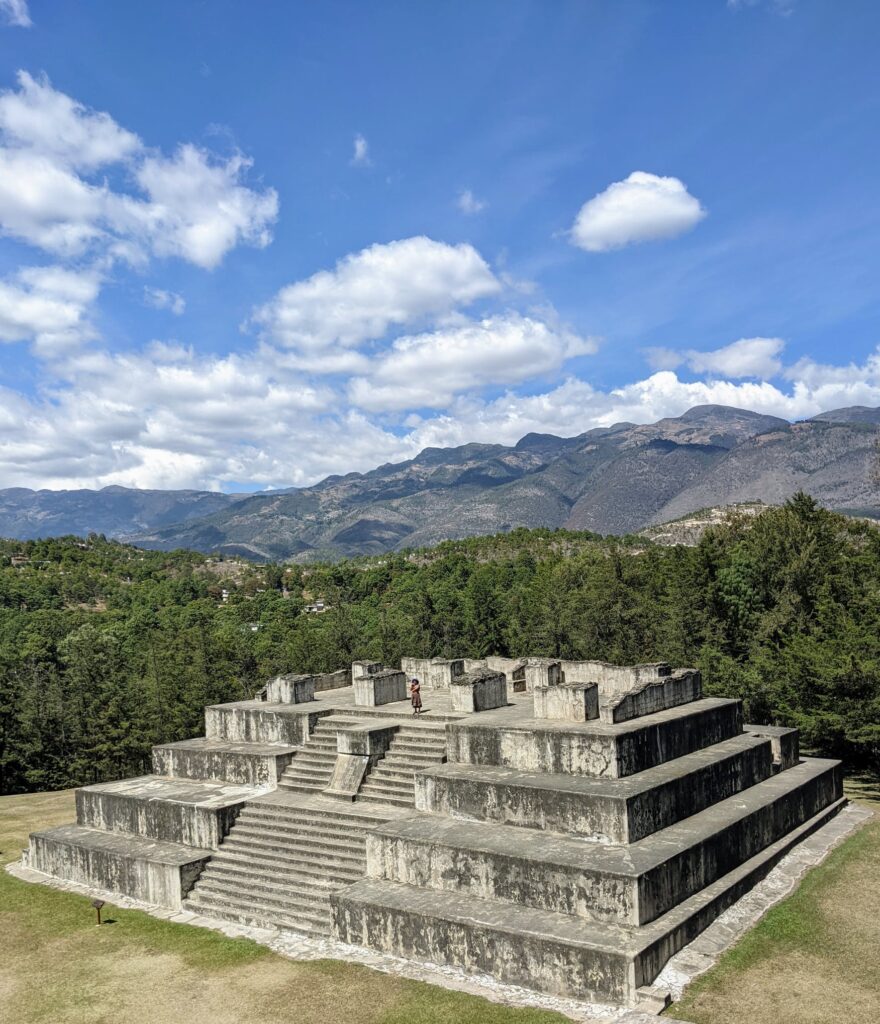
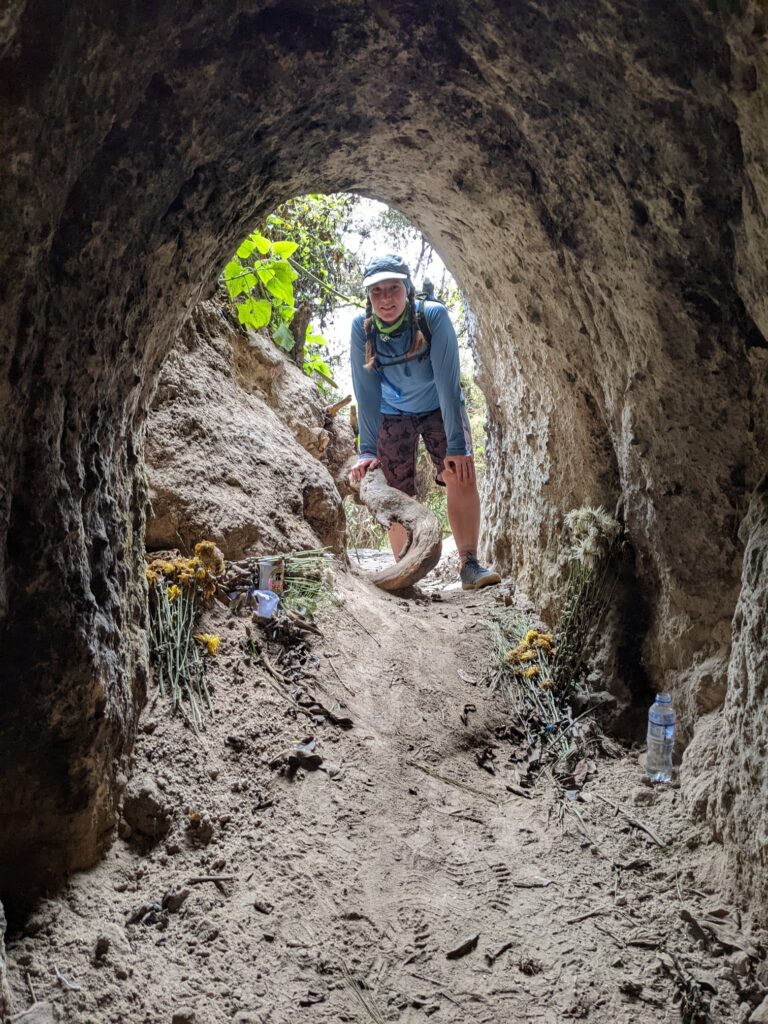
These are believed to be 3 of the 7 caves cited in the Popol Vuh, the sacred Maya Council Book, with characters such as the Hero Twins, whose epic games played out in these very caves. Throughout the text, the bent of the storytelling, helped me contextualize the culture. In every story there is a lot of trickery, both among the ancient gods and the modern people.
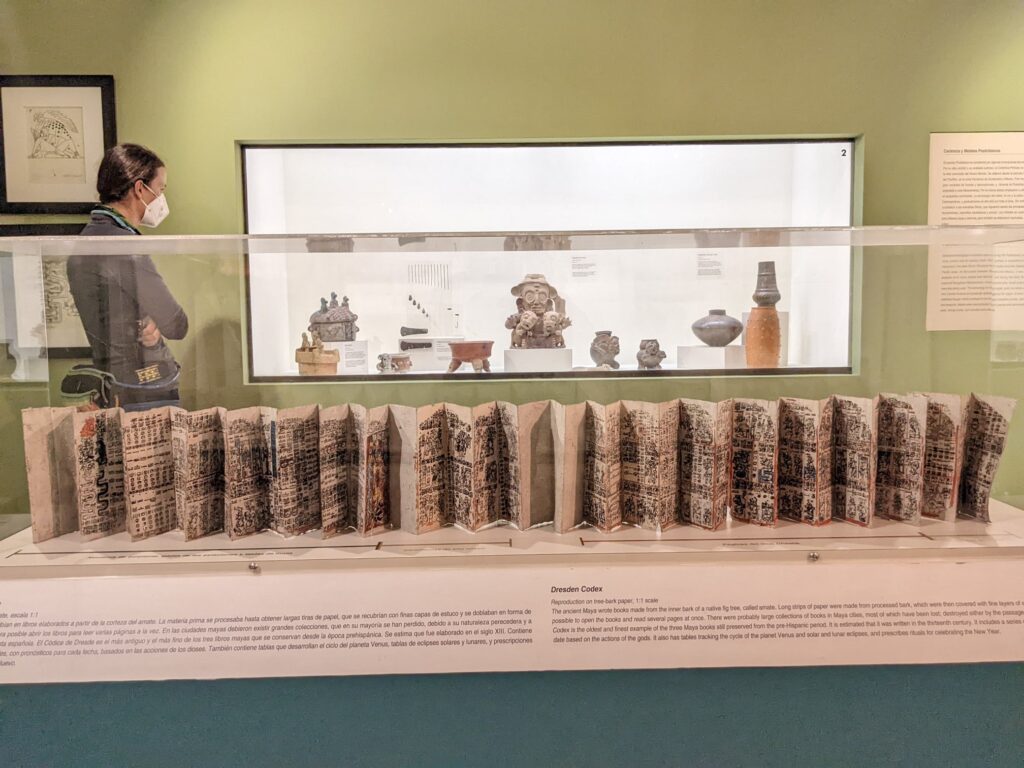
Once I put it together and began making efforts to join in the trickery game, it shifted my perspective from near constant irritation and indignation, to a sort of, sordid playfulness? I call them on their trickery (hiking prices, laying guilt trips to make me buy stuff, accusing me of breaking things which were already broken, etc) not directly, but redirecting.
For example, on our way through Guatemala City in thick traffic, my handlebar bumped the sideview mirror of a man who was napping with his shirt off on the shoulder. He sits up and is considering whether to work up the ire enough to put on his shirt and get out of his car. I play the feminine card and begin doting and insisting that no no, I must fix it and as I reset it I’m commenting that I need to get the clip set back in just right and “oh, this screw driven into the top of it, this poor thing must have been hit so many times before.” I let my eyes glance up at the right moment and he settles back in his seat. I’ve let him know that I know it was damaged already and I’ve now given him the honorable out to be the gentleman. He takes it and wholeheartedly and wishes me safety.
It’s funny, but often when I catch them at their tricks, they smile.
It’s not dishonesty, it’s trickery. Do you see?
On the same hand, there is this deep sense of pomp and dignity to equally small seeming affairs.
He and I chatted both on our way in and back out.
“Me da anima ver gente como ud, que vienen aqui,” he effused whole heartedly.
[“In return, I am very grateful that you preserve your history such that we may all learn more and may it inform us in moving forward”] I replied after I was done signing. He inclined his head in a small, gracious acknowledgment. A conversation is a dance, and with two young men sitting silently at his feet, I knew I was dancing with an esteemed elder and he parlayed generously and we all laughed easily as I bumbled my way through.
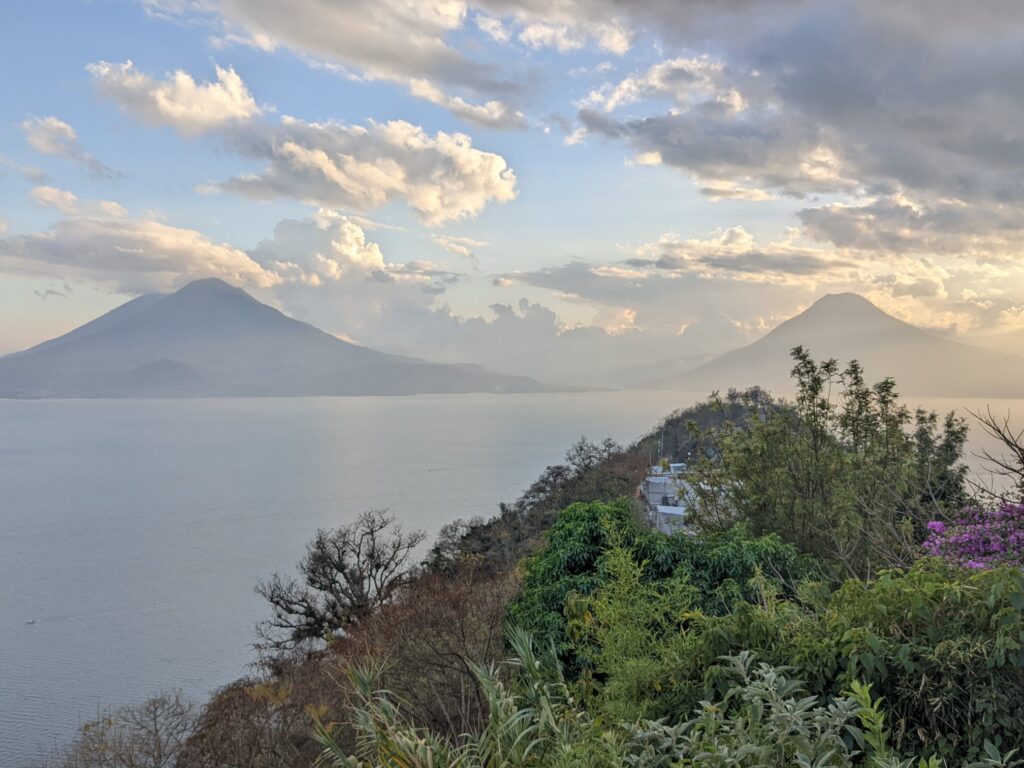
We enjoyed the rest day, doing our best to avoid the vendors who were understandably insistent after a long tenure without many visitors. I went out at dawn to watch the sun rise on the volcanoes and sketch quietly in the company of a perro callejero before the smog settled in for the day. It was interesting to regard the sacred body of water as such a significant filter.
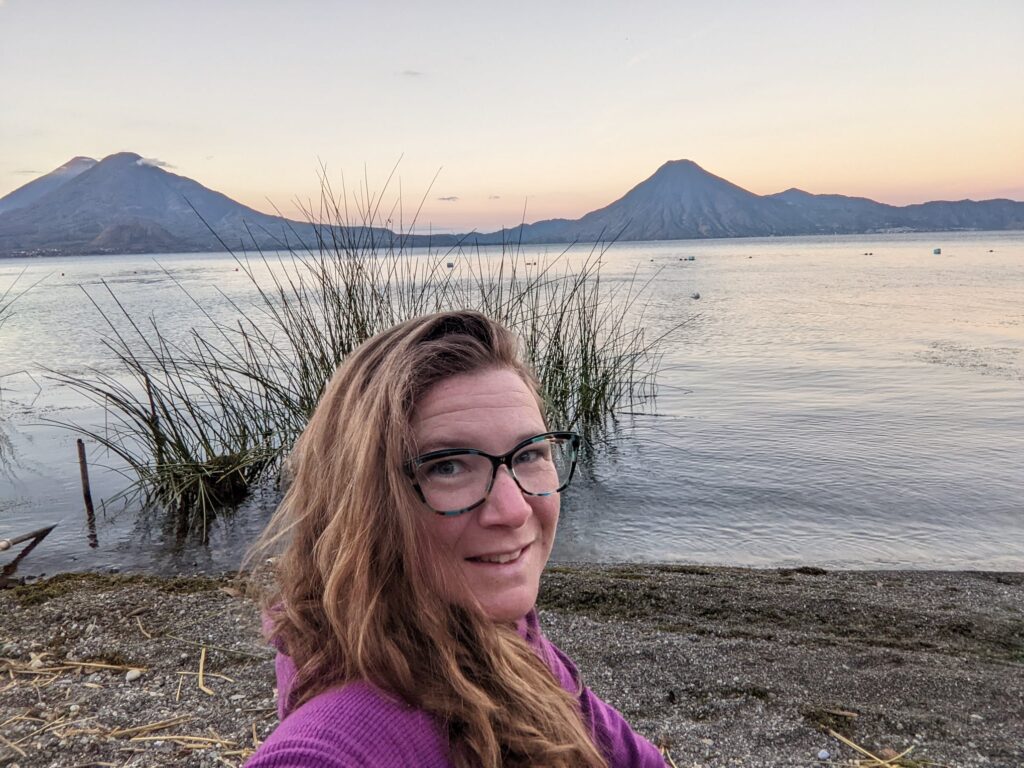
“Lake Atitlán lies in a crater, created by a great eruption of a volcano, the Chocoyos Eruption, approx. 85,000 years ago. As there is no outlet, the water level rose over the past years through the inlets of the principal rivers of the basin. The deepest point detected is approximately 340 m.”(source)
I like the lore of the singing princess, jealous waters, and spying wind better.
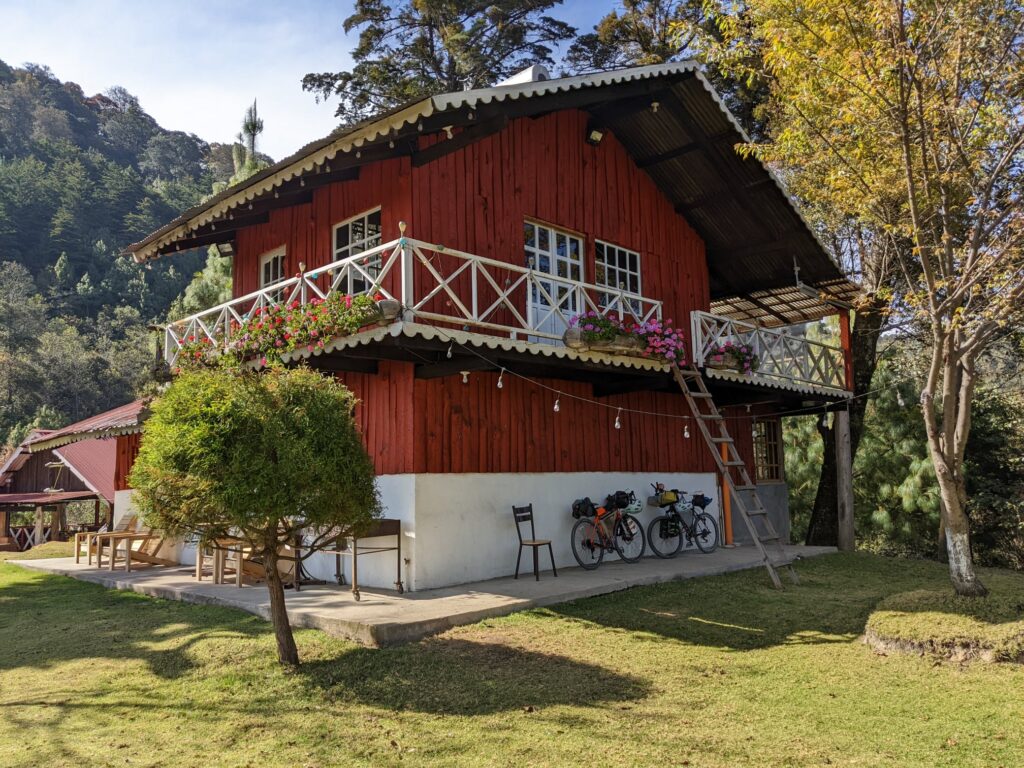
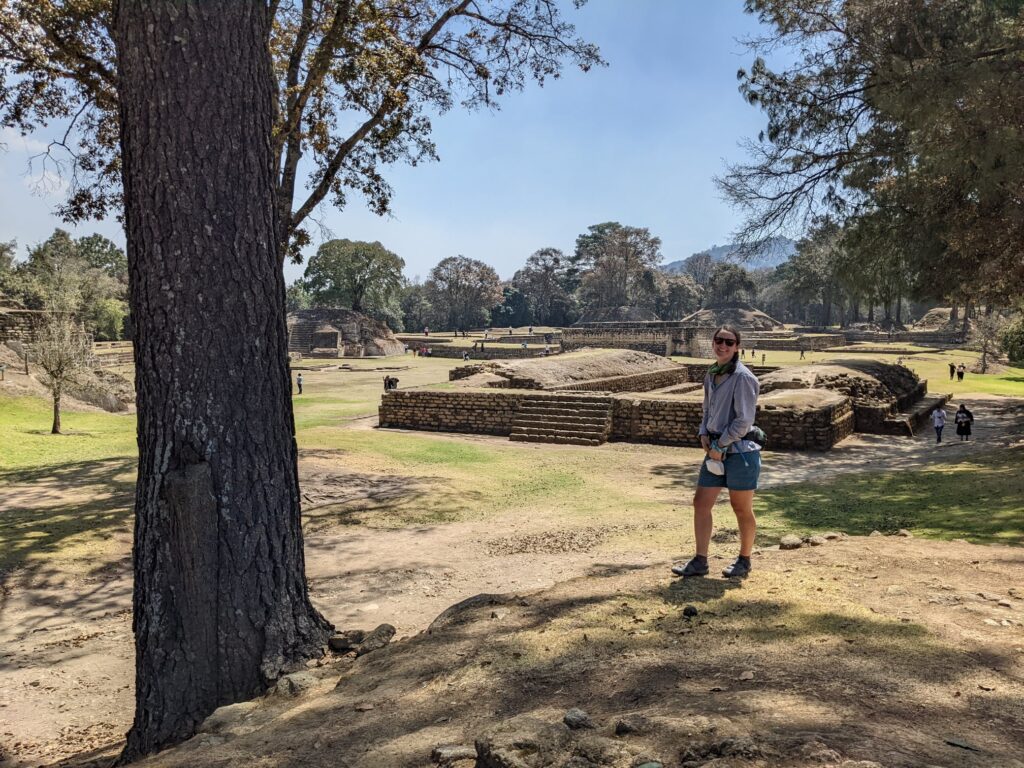
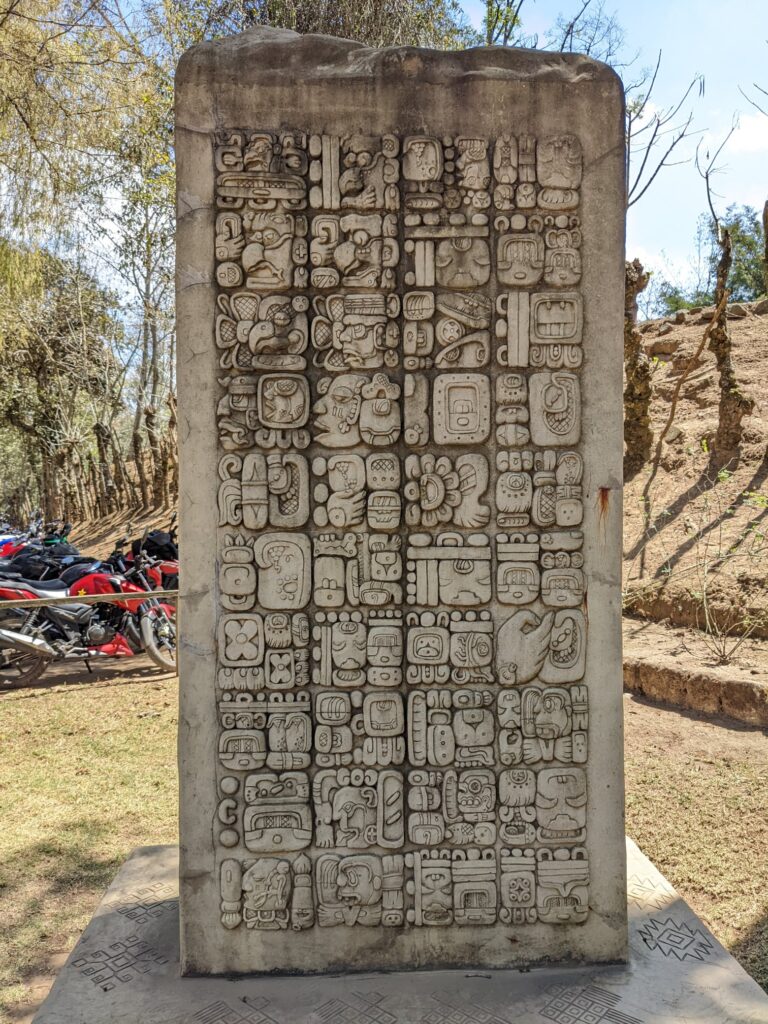
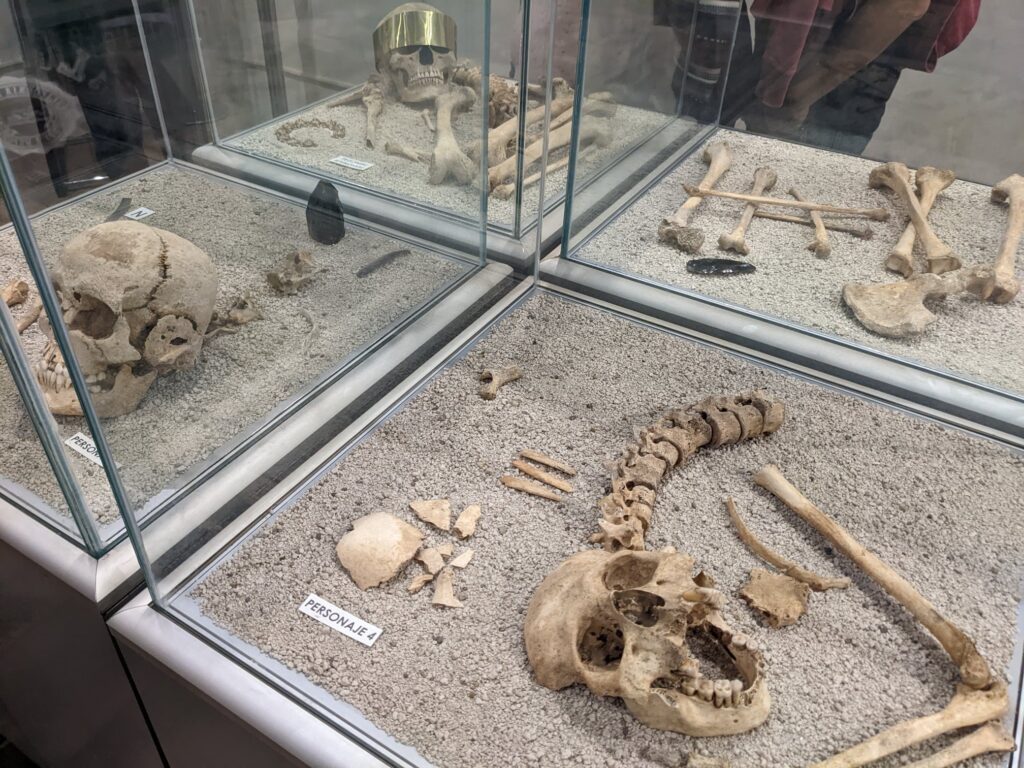
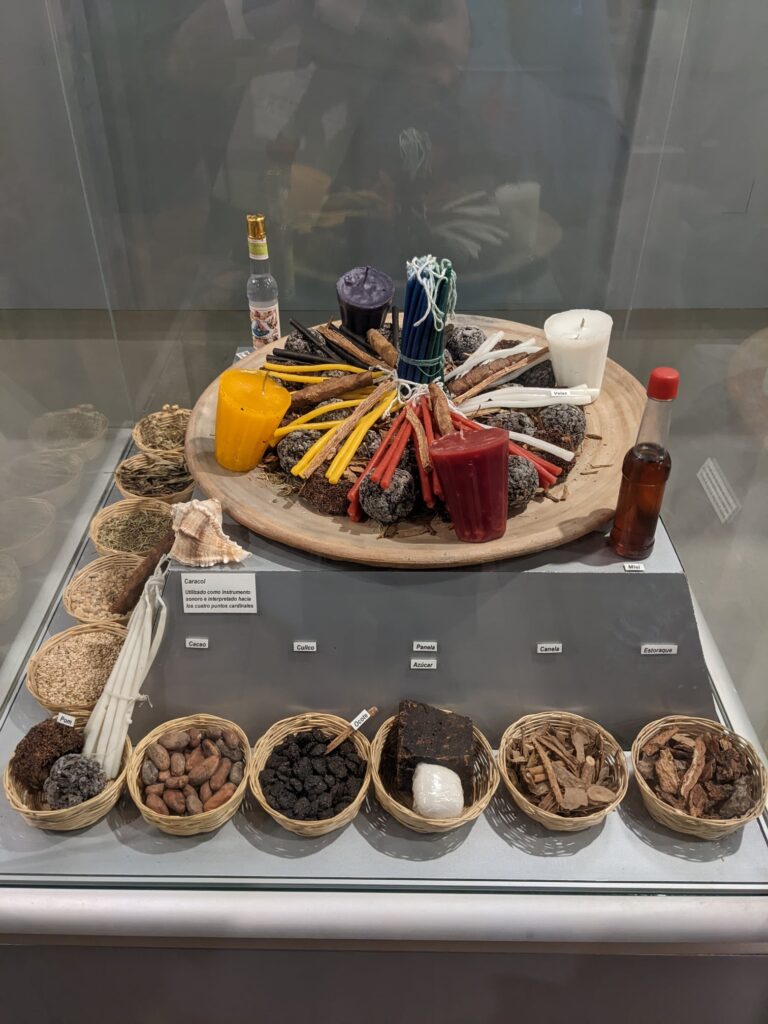 [Approved offerings.]
[Approved offerings.]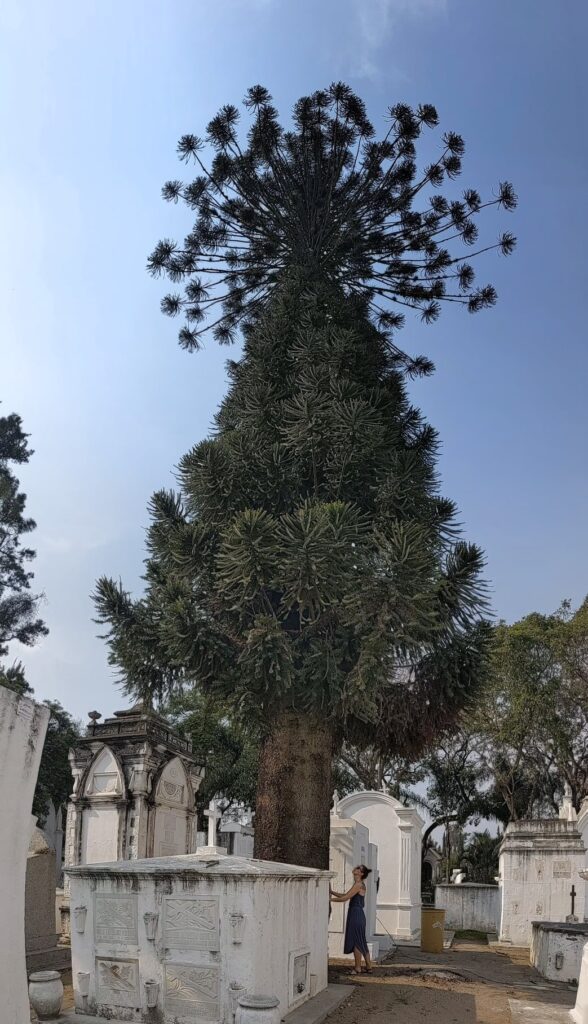
Another of the quintessential sites in Guatemala are the Chicken Bus. Decommissioned Blue Jay buses, far too dangerous for US citizens to put their children on, make it down here as community transport. They are blessed by priests and driven by descendants of Maya Warriors with the same reckless valiance.
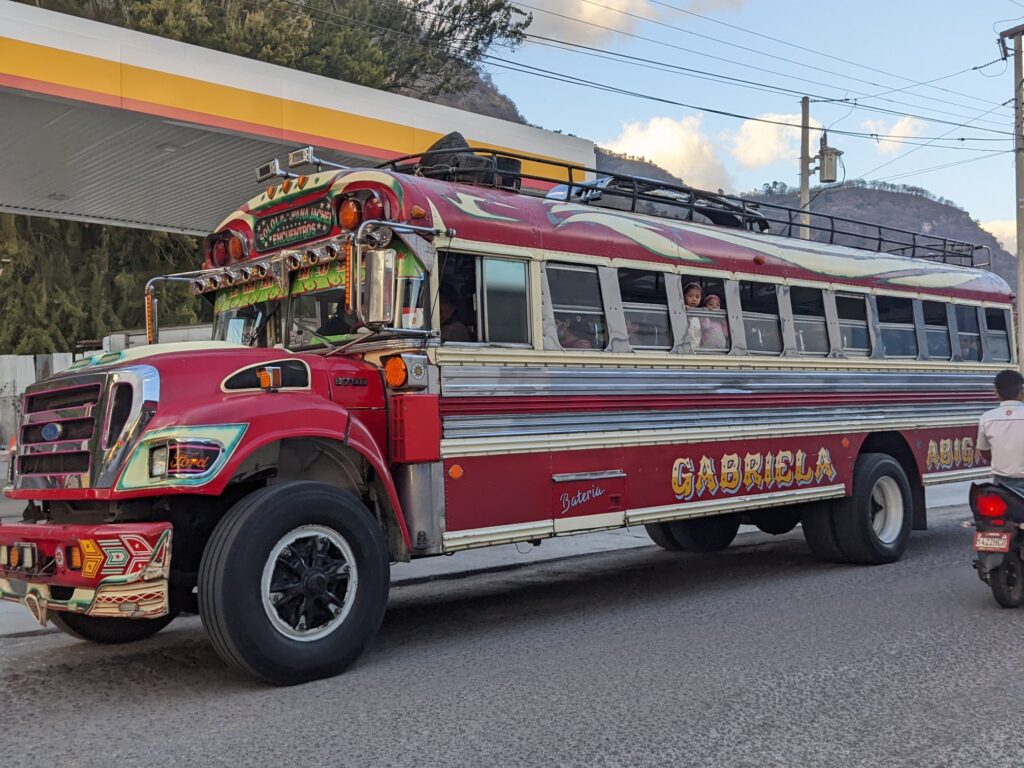
There is not much in the way of shoulders on many of the roads here and I’ve been extremely close to their tires and they are bald. They fly up and down mountains I can barely stay on my bike for. I mean it when I say there must be something to the Catholic blessings and flowers and crowns these things are given on certain Sundays at a price because otherwise I have no idea how they stay on the roads and get anywhere.
They are crewed by 2-3 men, the driver, the singer, and the monkey I call them. The driver is at the helm, keeping the thing moving at top speeds so as not to have to shift gears, which on the outside means belching black smoke.
The singer stands in the open door and sees people tucked into the shrubs and has a hand conversation with them as to whether they want a ride and alerts the driver. In the city he leans out the door, one foot dangling in the air and sings of promised lands and destinations.
The monkey is a young man who, upon seeing a future passenger with a bundle, crawls out of the flying contraption and climbs the side of it, swinging his weight with the hairpin turns and hops on top, where, the singer jumps off to usher the (usually a woman) on, and passes the bundle up, then stands just before the door such that when it lurches into motion he swings by his arm back into his post in the doorway and resumes his vigil.
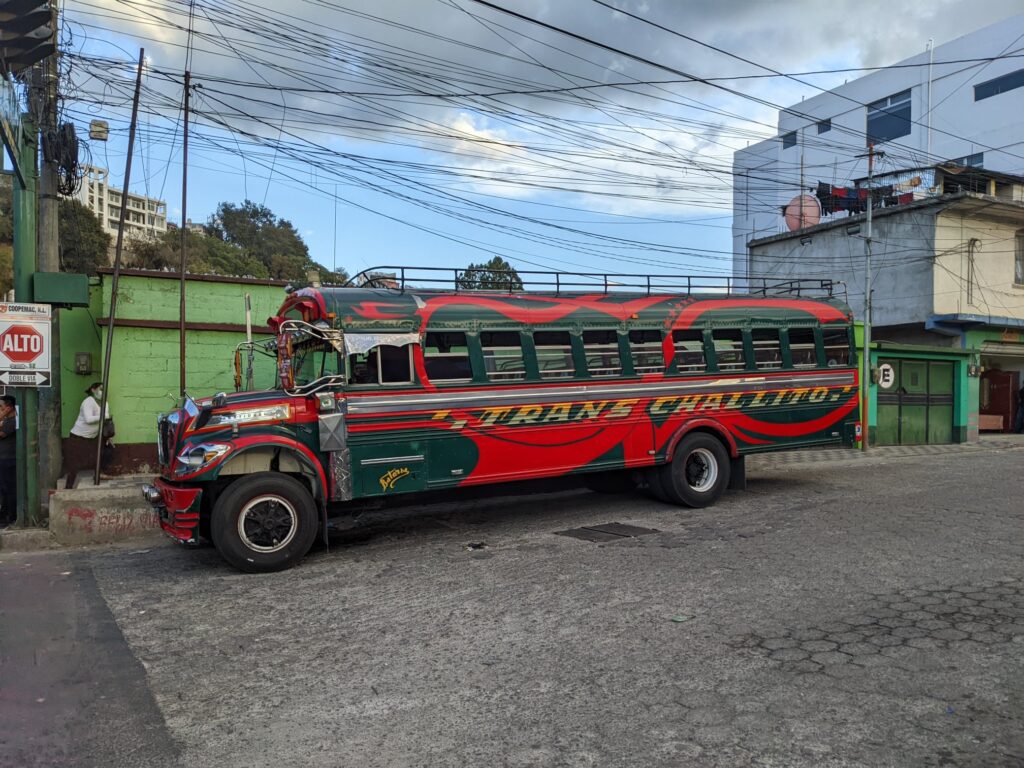
It’s easy as a cyclist, to make an enemy of these fellows. It’s easy as a First Worlder to feel strained by the inefficiencies and systems. I am as worn out as my rear cassette and becoming weary and testy. Yet, every day, moving amidst poverty and struggle of people for whom being here is not a choice, I catch glimpses of soulful love.
Whether its the machete wielding abuela who appeared from the trees flashing me a smile, or a line of Chicken Buses lined up at the car wash, being lovingly and thoroughly cleaning by their drivers, I see vivid, unabashed humanity. I’ve asked about the decorations and heard the pride in their voices. They spend their life savings to acquire, maintain, and decorate these terrifying, funny, eye catching vehicles.
Riding out of Guatemala City, after a descent and starting to climb, so was a Chicken Bus. I look over at the singer, standing in the door. Our eyes meet and we are deciding how this will go. I extend my fist and keep pedaling as hard as I can. He extends his fist and we bump. He’s from Guate, the city folk are different but still he gives me that acknowledgment, then looks away and lets me see a smile.
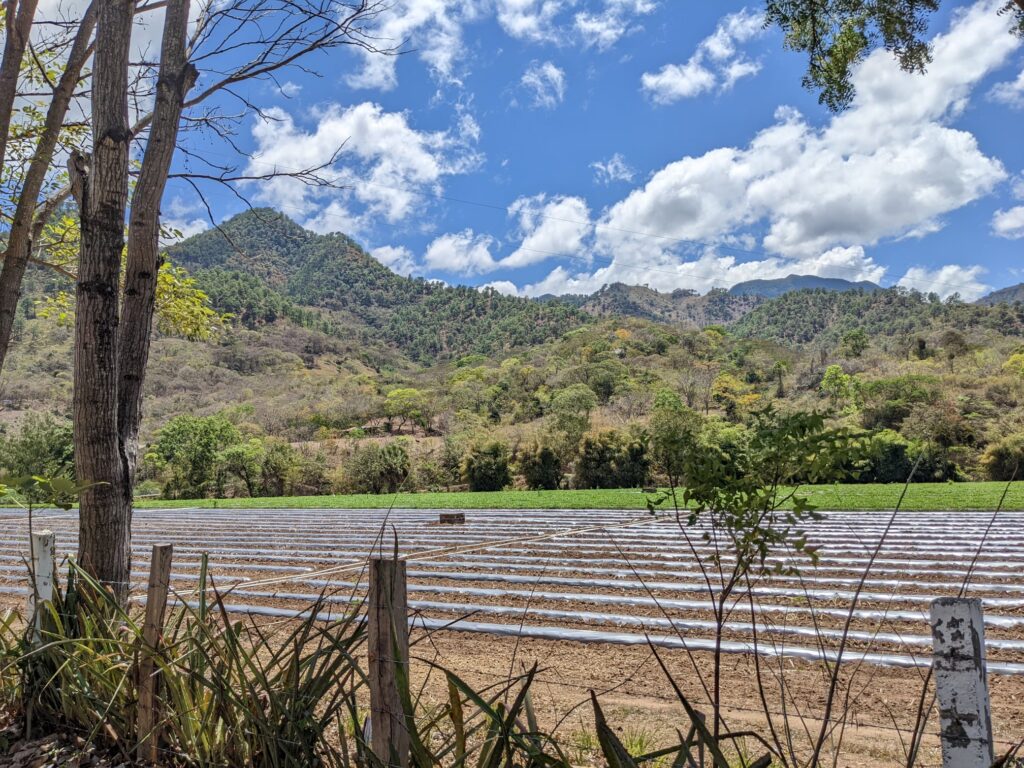
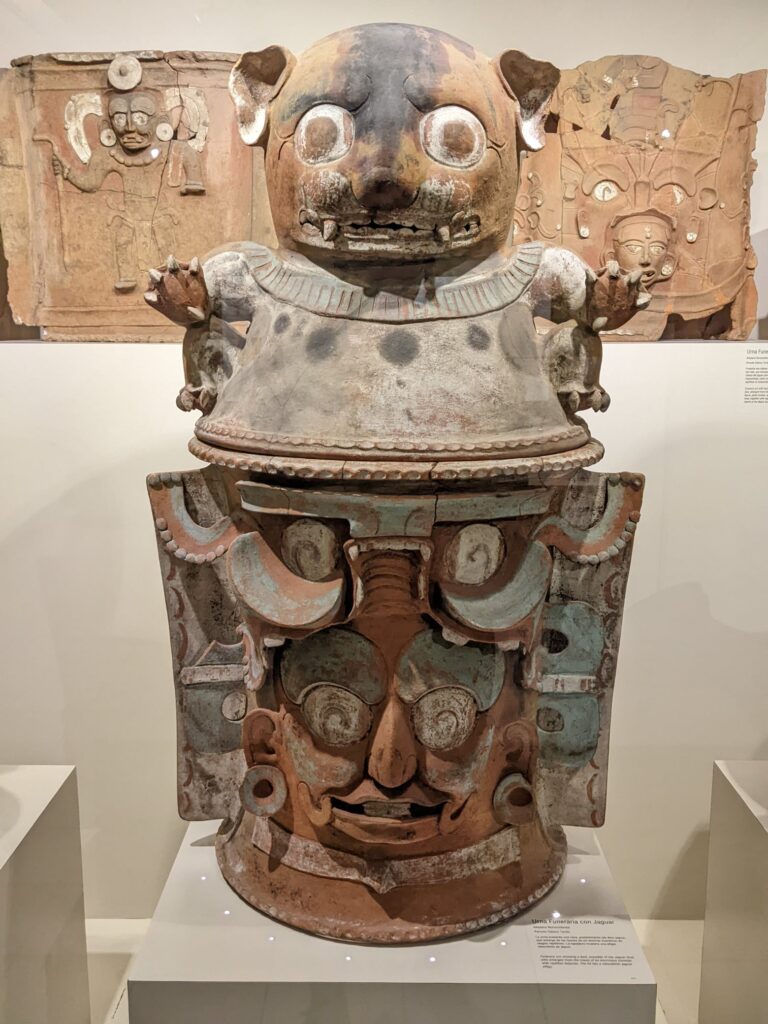 [Maya funerary urn in the Popol Vuh Museum]
[Maya funerary urn in the Popol Vuh Museum]




